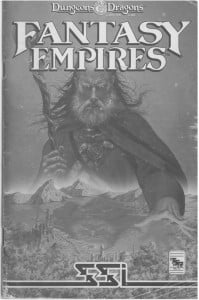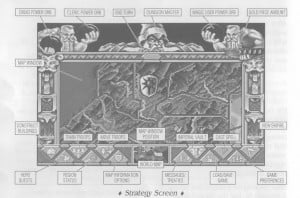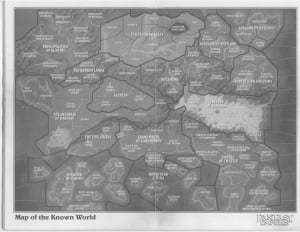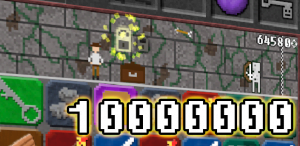Now that Microsoft and Sony have had their big next generation console press conferences, we should have a level field to compare them. Unfortunately, neither side wanted to play ball. Sony made their pitch at developers while showing lots of games and no hardware beyond the controller. Microsoft made a pitch for the unified living room showing hardware but few games. These presentation left gaming fans wanting more. That should be a good thing for an upcoming launch.
Sony translated their conference into a steadily building positive buzz. Yes, there were some haters, but overall they received positive coverage and dominated the console news for nearly two months. Microsoft sort of exploded onto the scene. Or perhaps they imploded.
Here’s the goal of any news conference especially one dealing with rampant speculation. Replace all bad messages with your message that puts your product (company, candidate, etc.) in the best possible light. No one really achieves that completely, but success is measured by how close you come to that goal. Microsoft had a near total failure.
Now a failure to communicate doesn’t mean that the product will be a failure. It just makes things more difficult. It also doesn’t reflect on the quality of the product. Based on everything I’ve read, I’d expect the two products to be very similar inside the box. They both have AMD 8 core x86 chips with AMD graphics integrated on the system chip. The PS4 has more graphics cores and faster memory, but the impact on multiplatform games should be minimal. In fact, the similar architectures should make porting much easier.
Raw power has rarely been the deciding factor in console wars. The upcoming generation will probably come down to focus and exclusives. Both controllers look to make modest improvements on the versions they are replacing. I don’t know if lighting effects trumps vibrating triggers or not. I don’t think Sony’s touchpad will be a significant factor, but I know I’ll feel less silly swiping on my controller than I do making some of the silly gestures I make with the current version of kinect. Speaking of kinect, it and Playstation’s move both feel gimmicky. I’ll have to see something compelling to change my mind. In general, I do support more controller options over fewer.
So what about focus? Sony only wanted to talk about games and especially game developers. That easily resonated with gamers. Microsoft wanted to own the living room. I don’t have a problem with that goal. It’s just that every effort thus far has been a flaming disaster. Not to mention that everyone has a different idea about what ‘one box’ should do. Here’s mine. I need a cable box plus an over the air tuner. I need a DVR with multiple tuners. I need a surround sound receiver with multiple HDMI and legacy inputs. I want streaming and downloadable video. I want a game player with backwards compatibility. I want a blue ray and DVD player. I need internet access that supports apps and channels. I need to be able to control it with a remote, with voice and my smartphone or tablet. I want a seamless, consistent interface. Clearly I am insane. Honestly, on that list, Microsoft doesn’t do too badly. The problem is making what they offer work with what I have.
Theoretically, my receiver has HDMI control (or Consumer Electronic Control, CEC) after a firmware update. I haven’t actually tested this out. My TV does not. For some reason Tivo doesn’t seem to support it either. Perhaps Microsoft could work that out since the Tivo can be controlled over the home network and both need to be ‘online’ to keep working. Even if I had all CEC devices, there’s no guarantee that they would play nicely together with the XB1 as they’re from different manufacturers. Even people with CEC devices from the same company have had problems with compatibility. There have been anecdotal reports that the more CEC devices you add, the less stable the setup.
If CEC isn’t the solution, then we’re stuck with an IR blaster. Don’t get me started on IR blaster problems. Even if it works, I dread to think where I’d have to place a blaster to hit my Tivo, receiver and TV. Perhaps you can daisy chain them together at cheap Microsoft accessory pricing. Of course, the rest of the world can avoid this trouble since the TV features aren’t available there.
Update: I’ve heard that Microsoft is going to use Kinect 2.0 as an IR blaster. The Kinect points the wrong way, but they claim that the signal will bounce off the walls and still work. Good luck with that. It’s even worse since the XB1 has no way of knowing if the blast bounce worked.
If I get it all working, it sounds nice. I can use voice control for everything. Well, it doesn’t sound like it will initially be able to access anything recorded on my Tivo. I also wonder if I can exclude voices. I really don’t want my three year old shouting, “Xbox, watch Word World.” and having that work when I’m trying to game or watch a show or movie. There have already been threats of griefers shouting “Xbox, turn off” over voice chat. That shouldn’t work, but I wouldn’t throw out that headset just yet.
Speaking of getting things working, the truth is that I’m going to wait before I buy an Xbox One. It’s been a long time since I’ve been excited for a major console release (sorry WiiU). Even though I don’t consider myself an early adopter any more, I’d be tempted to grab one of these consoles before Christmas. If I do, it’s going to be a PS4. It’s not just that I still have my abiding Playstation love from the PS2 or the fact that I’ve ended up playing my PS3 much more in the past couple of years than my 360. It’s not even that the last few dashboard updates for the 360 felt like they were more about serving ads to me than improving my gaming experience. No, it’s that I got burned hard on the 360 launch. I went through at least four consoles (it might have been five though I try not to think about it too much, the flashbacks, the horror, the horror) in my battles against the red ring of death. Yes, Microsoft kept sending me refurbished units, but it wasn’t until the dual die shrink Jasper units were released that I hunted one down and paid cash for the peace of mind. I still remember looking at the model and serial numbers to make sure I got the right version. To be fair, that unit has lasted for years without problems, but I can’t in good conscience buy another Xbox console without giving it at least six months to prove its reliability.
I must admit that I don’t understand smart match as a new feature for the XB1. I’m all for better matchmaking. After all, it must be hard to find people as incompetent as I am at online shooters. I don’t understand why you’d ever want matchmaking that takes so long that you want to watch a movie or video. And if I ever started playing another game while waiting to get into an online game, I’m unlikely to go back to the online game.
In short, Microsoft needs to turn this ship around and prove hardware quality and functional software to get me to bite.










